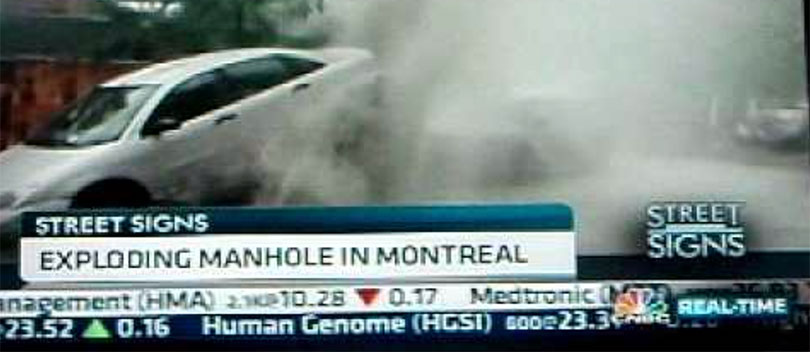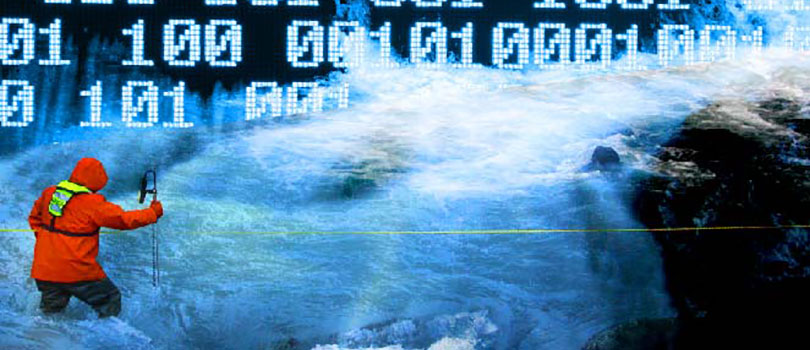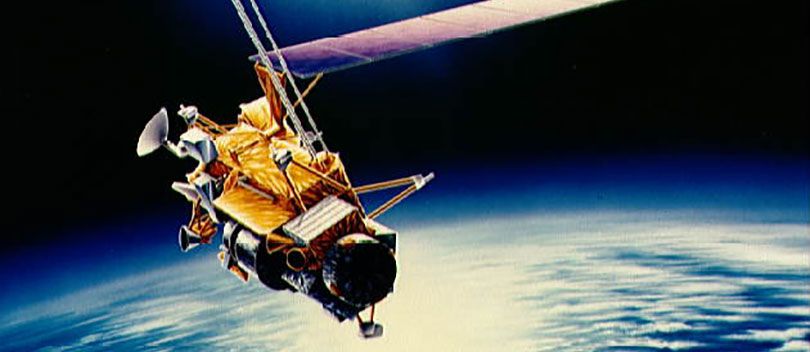
Montreal Geysers – Environmental Monitoring and Engineering Design
Manhole turned geyser hurls a car into the air after a sewer flooded in Montreal.
The videos shown in the news stories about the May 29, 2012 storm in Montreal are incredible to watch. This is a dramatic example of the intersection between monitoring and engineering design. The Environment Canada data online indicate only 27 mm of rain for May 29. What makes this weather event notable is how different it is from the events for which the storm sewers are designed. If this event had occurred in a location with no storm water engineering, it may have passed unnoticed.
There will, no doubt, be many studies done on this storm, which will allow us to characterize just how unusual this intensity and duration of precipitation is for this location. Environment Canada now has a Google app to allow you to search and discover Intensity-Duration-Frequency (IDF) curves for selected locations in Canada. It is curves like this that enable an engineer to size and design urban storm sewers for any given catchment.
So what went wrong?
Well, it is Montreal after all, where many people will be suspicious of corrupt politicians having granted contracts to mob affiliated construction companies and then allowing them to ignore design specifications while taxpayers are on the hook for inflated costs. However, we should not necessarily neglect the changing dynamic between environmental monitoring and engineering practice.
At the time these storm sewers were designed it is entirely possible that the design and construction was done to the best engineering standards. There are at least two possible reasons why the assumptions made by the design engineers are now untenable. One is that the time-to-concentration in the urban catchments may have changed as a result of urban densification and associated increase in impervious area within these catchments. The other is that the IDF curves may have changed. This could be a result of global-scale climate change or local-scale boundary level effects (e.g. urban heat island effect and/or urban canyon wind funneling).
There are perhaps several lessons to be learned here of which I will only suggest two:
- Engineering design use of environmental data should not be based on the assumption that the climate is stationary.
- Environmental monitoring products and services need to be developed to characterize uncertainty. A full characterization of uncertainty would include consideration of the instrumental uncertainty (i.e. the limit in our measurement ability); conceptual uncertainty (i.e. epistemic errors that may be inherent in our choice of technology); and sampling uncertainty (i.e. how representative what we measure is of the information we want to know).
Water distribution and storm water drainage rust-out is a looming problem all over North America.
There are hardly any jurisdictions that have water infrastructure that has not out-lived its best-before date and is also robust to the current climate regime. The re-engineering of our cities will be occurring over the coming decades, with localized acceleration of political motivation in places like Montreal. What we need to do first is re-invest in monitoring now to provide the data, services, analyses and interpretation needed for what is setting up to be a continental-scale engineering problem.
The City of Lake Oswego provides an example of how effective environmental monitoring can improve urban water resource management. You can read the City of Lake Oswego case study here...


